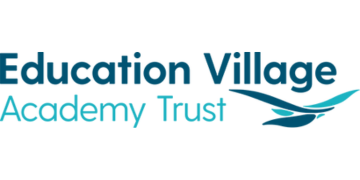More than nine in 10 primary leaders and eight in 10 secondary leaders say a “lack of funding” is a barrier to supporting pupils with SEND.
The Department for Education has published the latest results of its regular school and college voice omnibus surveys. They are wide-ranging in topic, and chart changes in views over time.
The surveys involve 1,663 primary teachers, 1,326 secondary teachers, 625 special school teachers, 838 primary leaders, 609 secondary leaders and 343 special school leaders.
Here’s what we learned.
1. One in 10 fear SEND support not ‘effective’
In December, although 79 per cent of primary and secondary leaders said their school could effectively support pupils with SEND, 12 per cent said they could not.
Special school leaders asked on their own were much more likely (99 per cent) to say their school could provide effective support (99 per cent).
The most common barrier to SEND support across all phases was a lack of funding, cited by 93 per cent of primary leaders, 82 per cent of secondary leaders and 68 per cent of special school leaders.
By February, these figures had increased to 95 per cent for primary leaders and 84 per cent for secondary.
The second most common barrier cited was lack of access to external specialist support or professionals, cited by 81 per cent of primary, 83 per cent of secondary leaders and 45 per cent of special school leaders.
Other barriers included staff supporting a large number of pupils with differing needs and a lack of staff such as teaching assistants, as well as a lack of time.
Only 44 per cent of special school teachers said they were able to access external support they needed all or most of the time. This dropped to 24 per cent of primary teachers and 19 per cent of secondary teachers.
2. Some schools allow phones in lessons
The December survey found that 93 per cent of primary schools had restrictions on mobile phones, with 20 per cent banning them from site completely and 72 per cent making pupils leave them in a secure place.
Sixty-six per cent of secondary schools said they let pupils bring phones to school but do not permit their use, while 6 per cent ban them from site and 3 per cent lock them away.
But 13 per cent of respondents said pupils were allowed to use phones in lessons with permission and 9 per cent allow their use at break and lunch.
3. EBacc only for ‘high-performing’ pupils
The English Baccalaureate measures schools based on the proportion of pupils entered for a suite of five subject groups – English, maths, science, a language and either history or geography.
Of the survey respondents, 11 per cent said they only required “high-achieving” pupils to take the full suite of subjects and 29 per cent said only “high” and “middle-achieveing” pupils took them.
Forty-two per cent said they required all pupils to take the EBacc subjects except in “exceptional cases”.
This tallies with the national picture. Entries to the EBacc have hovered around 40 per cent for years, in large part due to poor take-up of languages.
4. 1 in 5 schools struggle to provide mentors
Schools have to provide mentors for trainee and early career teachers, but this is proving difficult for some during a recruitment and retention crisis.
Twenty-two per cent of leaders surveyed in January said it had been very or fairly difficult to provide mentors.
Of those who struggled, 95 per cent cited concerns about capacity, high workload, or stress, while 50 per cent cited insufficient recognition for the additional work.
Although 74 per cent of teachers said they would consider being a mentor in future, 15 per cent said they would not.
The most common reasons were concerns about capacity, high workload, or stress (73 per cent) and insufficient recognition for the additional work (54per cent).
5. Workload and stress puts teachers off leadership
Teachers were asked about their leadership ambitions. While 46 per cent said they were interested in progressing to a school leadership position within three years, 53 per cent said they were not.
The most common reasons were concerns about high workload or stress (76 per cent), inspection pressures (51 per cent) and spending less time in the classroom (43 per cent).
6. KS4 PE timetabling increased this spring
The previous government set out an expectation that all schools provide at least two hours per week of PE.
December’s survey revealed that in the autumn, the median number of timetabled minutes was 120 for key stages 1 to 3, but 60 at key stage 4.
January’s survey found that in the spring term, average hours had increased to 75 for key stage 4.
Eighty-six per cent of leaders said the number of minutes timetabled per week for PE did not vary across terms.
7. Most schools meeting 32.5 hour week
The previous government also set out an “expectation” that all schools provide a 32.5 hour school week by this September.
Ninety-two per cent of leaders said they were aware of the expectation, and of those, 79 per cent already meet it and 13 per cent were likely to meet it.
Only 1 per cent said they were unlikely to meet the expectation and 2 per cent said they were not planning to.
8. Big increase in schools’ use of AI
February’s survey asked about the use of artificial intelligence.
It found 3 per cent of primary leaders, 14 per cent of secondary leaders and 10 per cent of special school leaders allow pupils to use generative AI such as ChatGPT in work they have set.
But 35 per cent of teachers and 36 per cent of leaders said they had used such tools in their role, with a further 24 per cent of teachers and 27 per cent of leaders saying they planned to use them in future.
When the same question was asked in April 2023, just 12 per cent of teachers and 11 per cent of leaders reported having used AI.
Teachers most commonly reported using AI tools to create lesson and curriculum resources (26 per cent) or to support with planning lessons and curriculum content (16 per cent).
Leaders most commonly reported using AI to create lesson and curriculum resources for pupils to use (18 per cent) or to support with communicating and engaging with parents (18 per cent).















Your thoughts